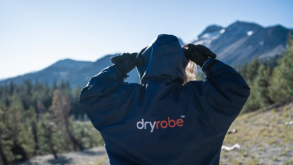The first article in this series dealt with experiments by the author using two AI assistants. One was internally adapted for use by Cabinet M Oproiu’s patent attorneys by deleting its memory. The experiments involved using the AI assistants to respond to two office actions for two patent applications in different technical fields.
The use of AI assistants by patent attorneys is tempting as it can shorten the time taken to prepare submissions.
This article deals with experiments using the AI assistants for patent drafting and explores the limits of deploying AI assistants in such a manner.
Description of the experiments
The first application described a method and its equipment for multiple coating of a textile for use in the medical field – a tangible subject matter. In this case, the inventor knew very well the closest prior art and described the new invention as compared to it.
The second application described a method and a system for adapted data processing using neural networks – a very abstract subject matter. In this case, there was no closest prior art known to the inventor, but rather some different pieces of prior art from various sources.
The purpose of the experiments was to see how much one can rely on the reasoning of an AI assistant.
In both cases, due to confidentiality constraints, the AI assistants were fed successive rounds of input consisting of fragments from the inventor’s disclosure and targeted questions.
The AI assistants were not used to prepare the draft of the patent application. They were used exclusively to help differentiate from the closest prior art.
For the first application, the inventor provided the firm with the drawing of the equipment and some explanations.
The steps of the method and the main items of the equipment were created from the drawing and then compared with prior art. Here, the AI assistants were used to compare the step-by-step method of the new invention with the method from prior art and to give the differences and the advantages.
Then, the inventor was consulted to confirm the differences, which constituted the essential features and the advantages in support of the inventive step. The majority of the input received from the two AI assistants was confirmed by the inventor.
For the second application, the lack of a clearly defined prior art and the possibility of selecting among various problems to be solved by the invention was the main difficulty of the case. Here, the AI assistants were effectively useless, as this was a matter of filing strategy.
The author has noted that in many cases, the inventors mention too many disadvantages of prior art, too many problems to be solved, and too many advantages of the invention. In the case of multiple technical problems to be solved, the invention is not unitary, which leads us – as counsels – to the necessity to select a single problem to be solved, even if the problem can have sub-objectives allowable by the European Patent Convention (EPC).
Then the challenge is this: which problem to be solved is the best one to select? The author’s usual advice is that the best problem is the one for which there are stronger arguments to prove inventive step. Again, the AI assistants are useless here.
For this application, the AI assistants were used for only two purposes:
To clarify the terms to be used in the invention; and
To double-check that the origin of the disadvantages of prior art was correctly understood.
In both cases, the author expressly mentioned links to the EPC and to the Guidelines for Examination in the European Patent Office in the input to the AI assistants.
Provisional conclusions on the use of AI for patent drafting
Using AI assistants when drafting patents can be helpful, but it depends heavily on various parameters, such as the technical field and whether the inventor already knows the closest prior art.
The choice of which features are essential and which are optional when drafting patent applications, and how AI assistants can help, is discussed in the next article by Cabinet M Oproiu.












